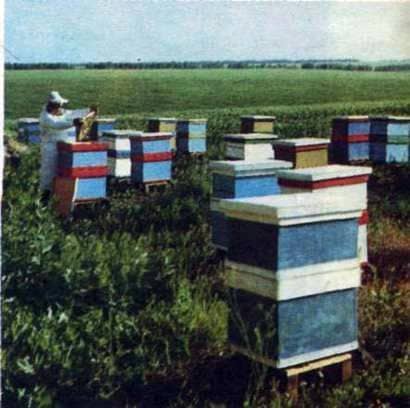
Receiving from the beekeeping nurseries of valuable breeding queens, beekeepers often lose them through mistakes in the placement in the family. Causes, when bees take hostilely other people’s queens, a lot, I will not recount them. I just want to share one of the ways that guarantees the survival of the queens without any difficulties.
In an empty box I shake the bees from three to four frames (preferably from the middle of the nest, where there are many young bees). After 2 hours old flight bees will leave the box and return to their hive, and young non-flying will remain. This will be the bees by which I place the uterus. They usually take it.
At the same time, you should add a frame with food and a rare syrup. When the uterus begins to lay eggs, the family is strengthened with a mature brood.
Как чистить улей. Кондитерские с медом.
Mothers and uterus